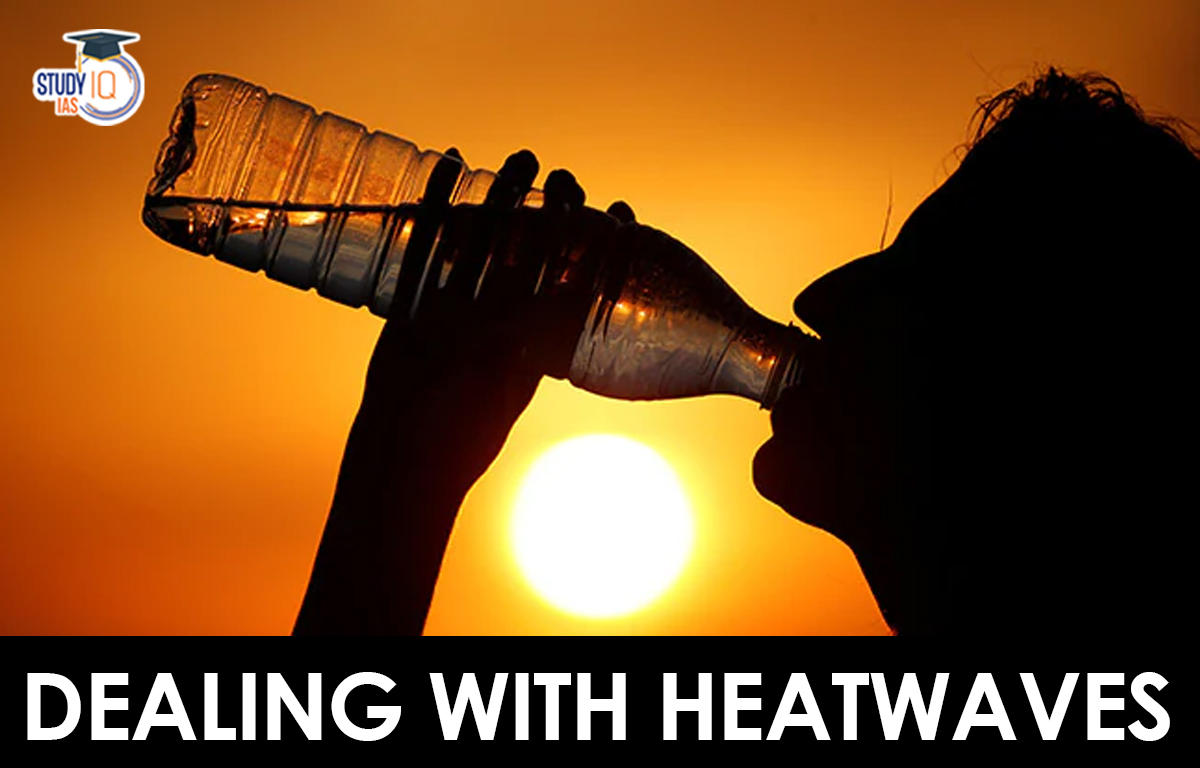Table of Contents
Context: Between April and May 2022, around 350 million Indians were exposed to strong heat stress.
Background of Rising Temperature in India
- Current situation: Summer temperatures across districts in Punjab, Rajasthan, Haryana, Uttar Pradesh, and Bihar on an average rose by 0.5-0.9°C, between 1990 and 2019.
- Similarly, winter temperatures have risen in about 54% of India’s districts.
- Future prediction: It is estimated that maximum temperature will rise by 2-3.5°C in 100 districts and by 1.5– 2°C in around 455 districts, between 2021 and 2050.
- Winter temperatures are likely to rise between 1°C and 1.5°C in around 485 districts.

What are Heatwaves?
- Heat waves are extreme events in which hot temperature in summer months persist for a relatively long period of time.
- In India, heatwaves typically occur between March and June, and in some rare cases even extend till July.
- Criterion for declaring a heatwave in India (as per IMD):
- Heat wave is considered if maximum temperature of a station reaches at least 40°C or more for Plains and at least 30°C or more for Hilly regions.
- Criterion for Describing a Heatwave in Coastal Stations:
- When maximum temperature departure is 4.5°C or more from normal, Heat Wave may be described provided actual maximum temperature is 37°C or more.
Based on Departure from Normal
- Heatwave: If departure from normal is 4.5°C to 6.4°C
- Severe heatwave: If departure from normal is >6.4°C
Based on Actual Maximum Temperature
- Heatwave: When actual maximum temperature ≥ 45°C
- Severe heatwave: When actual maximum temperature ≥47°C
Implications of Heatwaves
- Agriculture output: Higher temperatures due to heatwaves have reduced crop output significantly. For example, majority of cumin crop in Rajasthan has been destroyed.
- Labour productivity: Rising temperatures directly impacts labour productivity, both in urban and rural areas.
- About 50% of India’s workforce is estimated to be exposed to heat during their working hours, including farm labourers, construction workers etc.
- Impact on transportation: Heat stress can have negative impact on transport infrastructure, such as the softening of pavement, which can get damaged by vehicle circulation.
- Indirect economic costs: Heat related illness and mortalities may occur.
- Heatwaves may aggravate social inequalities (as the poor are more vulnerable to the impacts of heatwaves).
- Shortage of power: Heatwaves may increase electricity consumption due to rise in usage of Air Conditioners, fans and coolers.
- Forest fires: Heatwaves exacerbate the hot and dry conditions that help fires spread faster, burn longer and rage more intensely.
- Large areas of forests are already under threat due to such effects of heatwaves.

Mitigating the Effects of Heatwaves
- Increasing green cover: Since the problem is serious in urban landscape, it is imperative that steps should be taken to increase urban green cover.
- Increasing the density and area of urban forests will help reduce the effects of extreme heat.
- Restoring water bodies: Expanding wetlands and restoring dead and decaying water bodies may ensure ecological functioning apart from reducing extreme heat.
- Heat-reflective construction: There is an urgent need to push for greater usage of permeable materials in civic infrastructure and residential construction that will reduce temperatures.
- Heat-absorbent galvanized iron and metal roof sheets must be avoided in modern buildings.
- Promoting public transportation: Promoting public transportation will help in reducing personal vehicle usage.
- Reducing landfills: Landfills are responsible for emitting methane, which catches fires easily.
- These fires will exacerbate urban heat and weather variability.
Way Forward
- Improving forecasting: Improving our forecasting ability will help in reducing the potential impact of heat on food production.
- Local trends: Minimum support prices need to be fixed by looking at local trends in rainfall and heatwaves. This will help in capturing effects of heat on food production, storage and sale.
- Policies and guidelines: There is an urgent need for developing detailed policy guidelines on weather variability and urban heat management at the State, district, city and municipality ward levels.
























 WhatsApp
WhatsApp